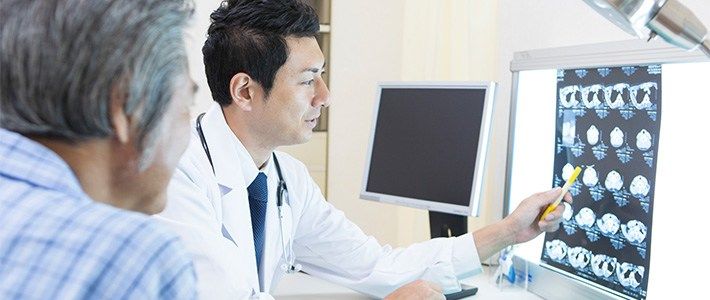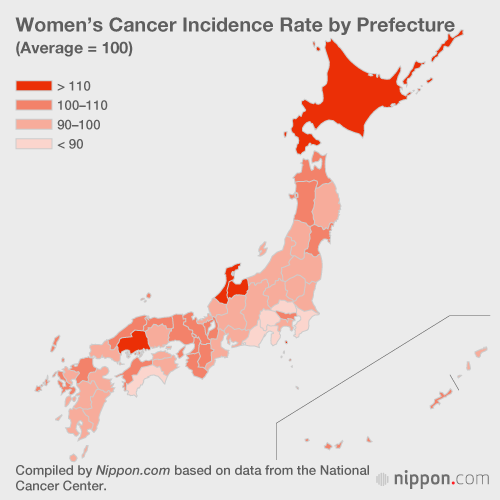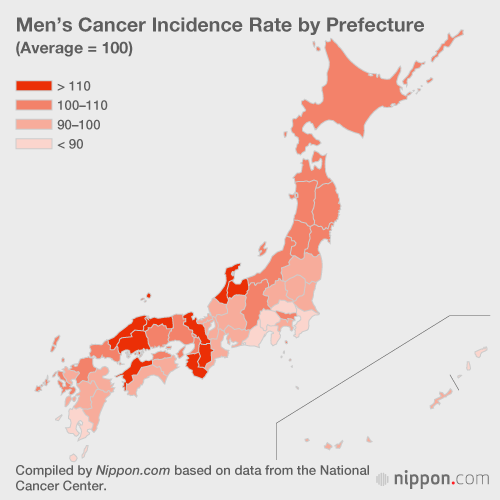
Cancer Incidence at All-Time High: 867,000 Cases Reported in 2014
Society- English
- 日本語
- 简体字
- 繁體字
- Français
- Español
- العربية
- Русский
The number of people who develop cancer have increased due to the aging population. According to a summary by the National Cancer Center, the number of people newly diagnosed with cancer was a record high of 867,408 cases in 2014. Of these, 501,527 were men and 365,881 were women.
The leading types of the disease among men were stomach cancer, lung cancer, colon cancer, and prostate cancer, accounting for an aggregate of over 60% of all cases. For women, about 20% of the cases were breast cancer. Colon cancer afflicted the most people when counting men and women together, with a total of 134,453 cases. Because the number of cases of infection by Helicobacter pylori, a contributing cause to stomach cancer, has decreased, stomach cancer cases have declined; but cases of colon cancer have increased due to increased consumption of less healthy foods not found in the traditional Japanese diet.
Cancer Cases by Type in 2014
| Men | Women | Total | |
|---|---|---|---|
| 1 | Stomach | Breast | Colon |
| 86,656 | 76,257 | 134,453 | |
| 2 | Lung | Colon | Stomach |
| 76,879 | 57,735 | 126,149 | |
| 3 | Colon | Stomach | Lung |
| 76,718 | 39,493 | 112,618 | |
| 4 | Prostate | Lung | Breast |
| 73,764 | 35,739 | 76,780 | |
| 5 | Liver | Uterine | Prostate |
| 27,315 | 24,944 | 73,764 |
Compiled by Nippon.com based on data from the National Cancer Center.
Cancer incidence rates appear to be somewhat higher in northern Japan, the Chūgoku region of western Honshū, and along the Japan Sea coast. Topping the list of prefectures with the most cancer cases per 100,000 population were Toyama (442.2 patients) and Hiroshima (415.1); the lowest incidence rate was seen in Chiba (303.3).
As data is not collected with the same methods and levels of precision in all prefectures, and the accessibility of medical facilities and frequency of cancer checks can differ by region, this data does not signify that certain prefectures are more cancer-prone than others. There are, however, factors that may be playing a confirmable part in the disease rates, including the consumption of salty foods and alcohol and the tobacco smoking rates in the prefectures. Experts urge people to keep these factors in mind, undergo regular health checks, and remain aware that cancer, if detected early, is more beatable than it ever has been.


The NCC has announced that an expected 1.01 million Japanese will be diagnosed with cancer in 2018, including 574,800 men and 438,700 women. Colon cancer remains at the top of the list, with an estimated 152,100 new diagnoses. As the average age of the Japanese population continues to rise, the incidence rate has also grown considerably from the 2014 figures.
For more data on cancer survival rates in Japan, see “Beating the Big C: Three-Year Cancer Survival Rate at 71%”
(Translated from Japanese. Banner photo © Pixta.)